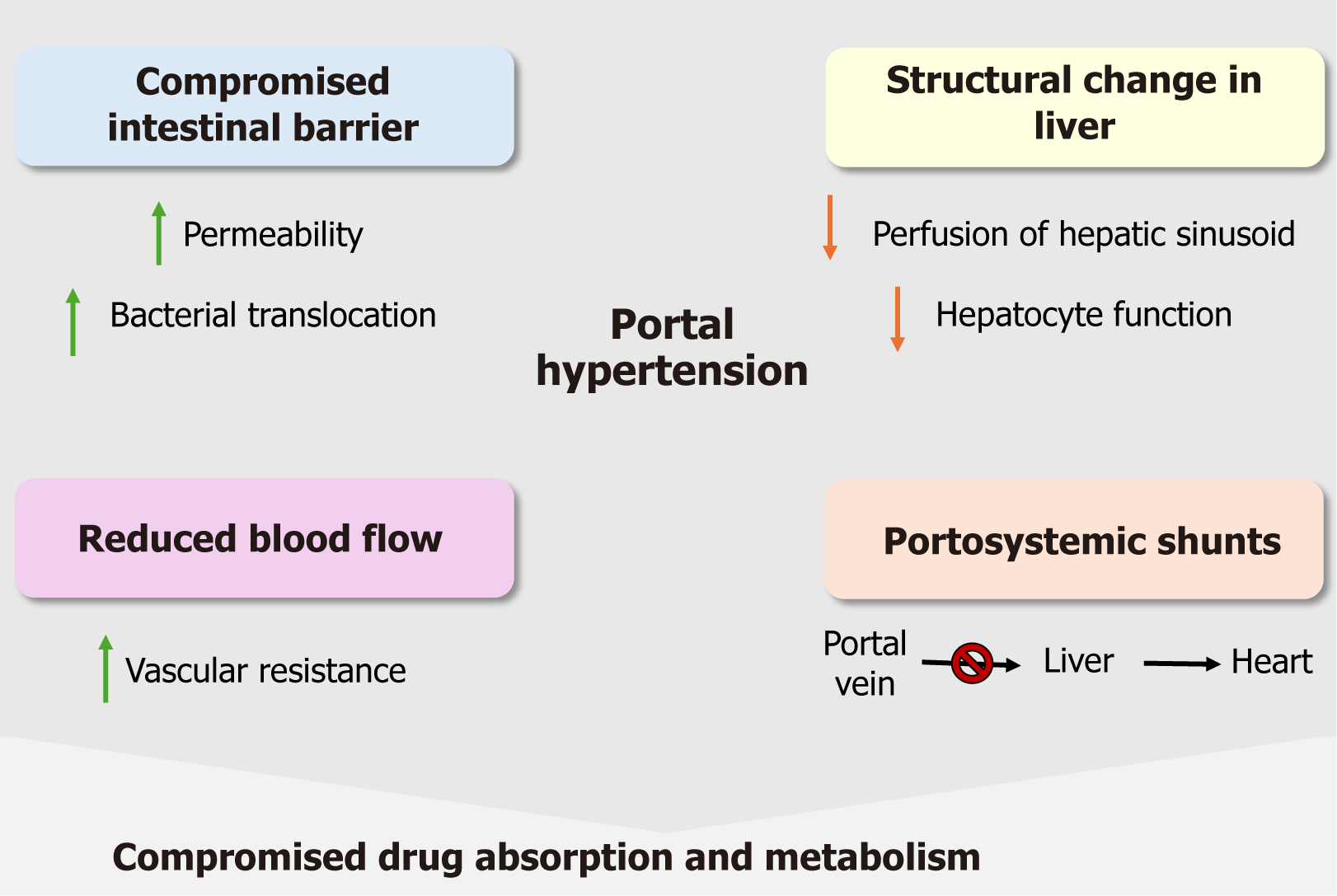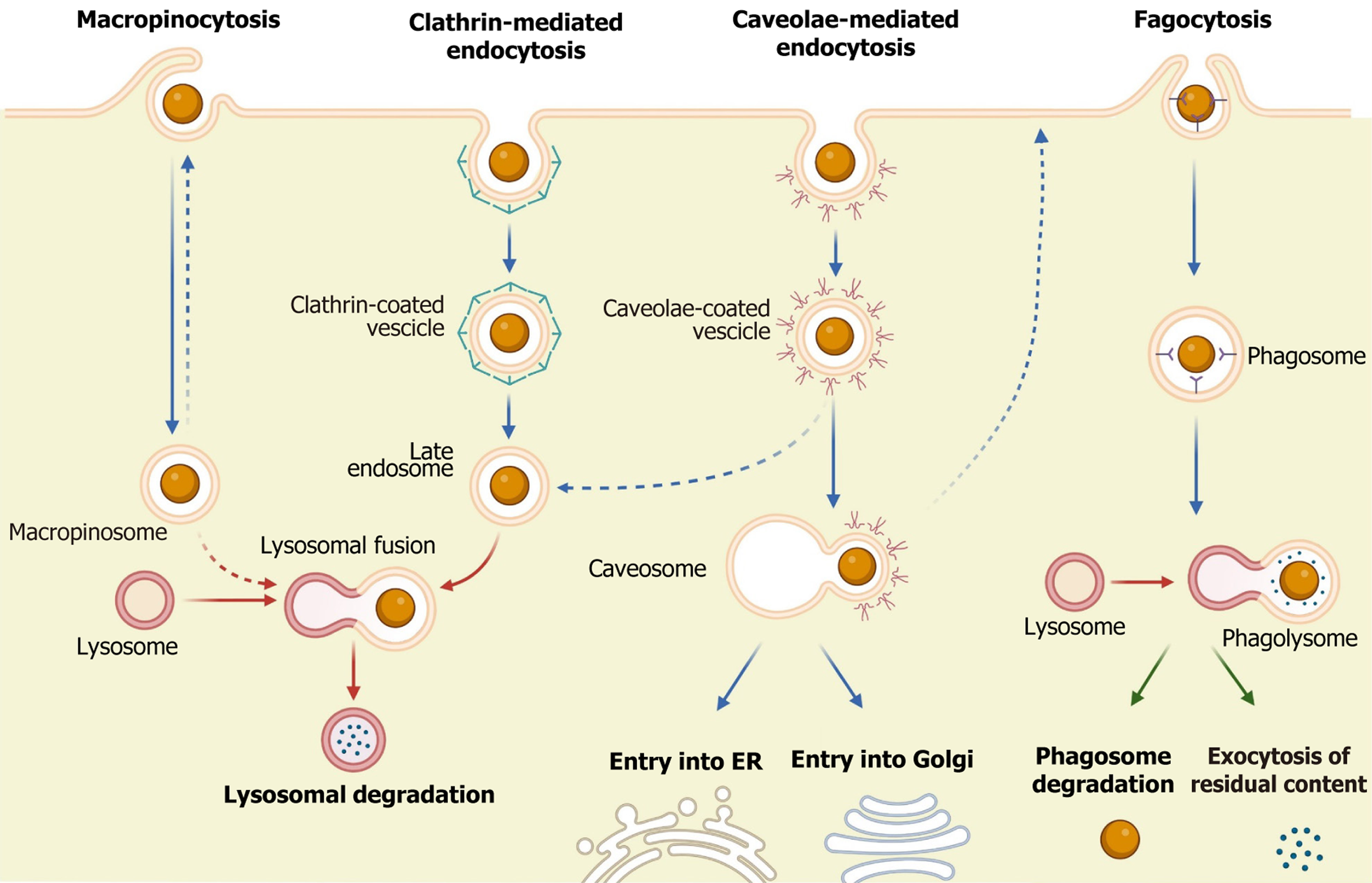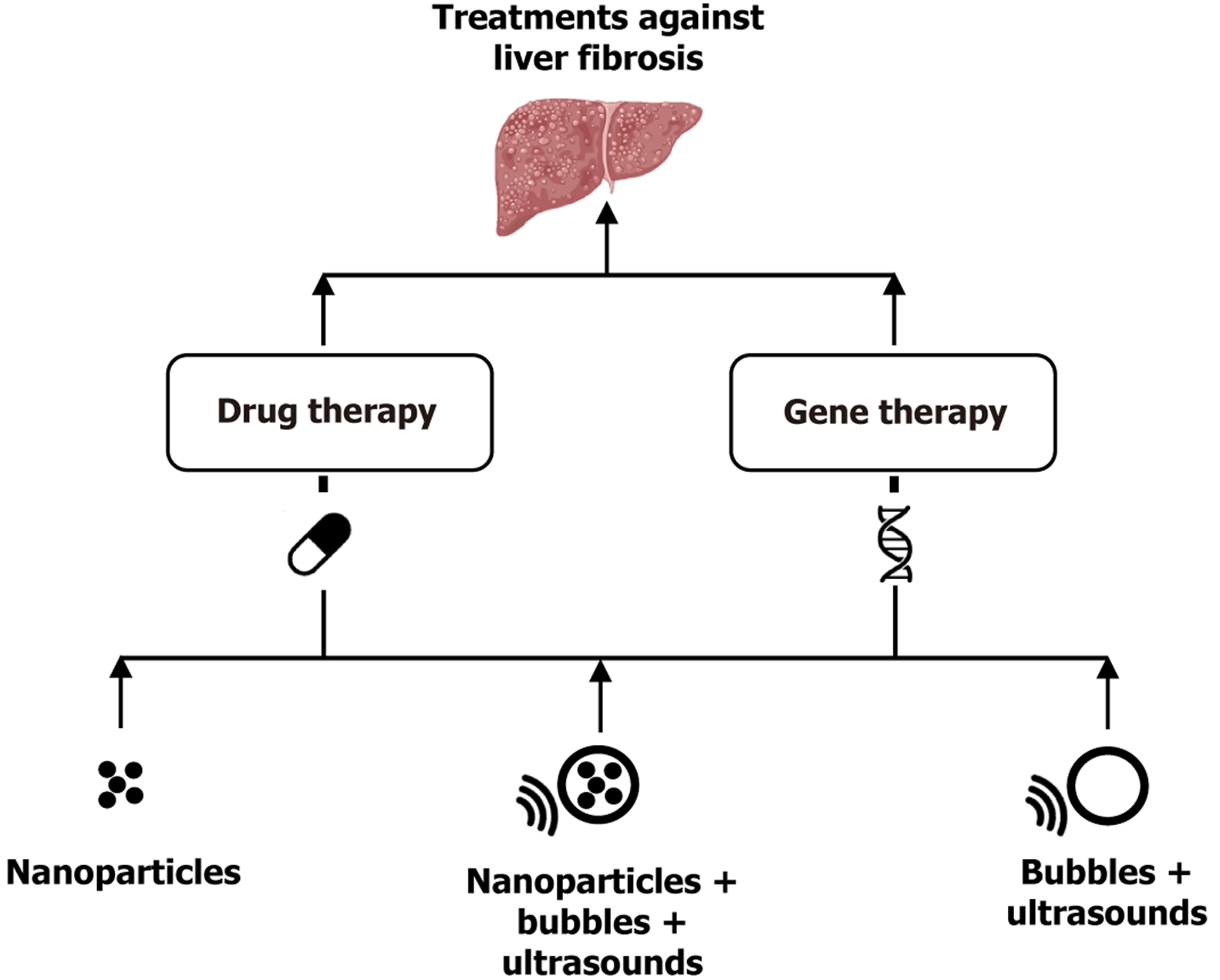Copyright
©The Author(s) 2025.
World J Hepatol. Oct 27, 2025; 17(10): 108810
Published online Oct 27, 2025. doi: 10.4254/wjh.v17.i10.108810
Published online Oct 27, 2025. doi: 10.4254/wjh.v17.i10.108810
Figure 1 Effects of portal hypertension on hepatic and intestinal function relevant to drug absorption and metabolism.
Portal hypertension contributes to increased intestinal permeability and bacterial translocation, structural alterations in the liver, elevated vascular resistance, and the formation of portosystemic shunts. These interconnected changes impair hepatic perfusion and detoxification capacity, ultimately compromising oral drug absorption and systemic metabolism.
Figure 2 Major cellular internalization pathways of nanoparticles and their intracellular fate.
Nanoparticles can be internalized through four primary mechanisms: Macropinocytosis, clathrin-mediated endocytosis, caveolae-mediated endocytosis, and phagocytosis. These pathways determine the intracellular routing of nanoparticles, leading to lysosomal degradation, entry into the endoplasmic reticulum (ER), the Golgi apparatus, or exocytosis. Clathrin-mediated endocytosis and macropinocytosis typically result in fusion with lysosomes, whereas caveolae-mediated uptake may bypass the lysosomal route, enabling alternative trafficking. Phagocytosis, mainly performed by specialized cells, leads to phagolysosome formation, with possible degradation or release of residual content. Created in BioRender.com (Supplementary material).
Figure 3 Schematic representation of therapeutic strategies for liver fibrosis.
Nanoparticles, microbubbles paired with ultrasound, or a mix of the two can be used to deliver drug-based and gene-based therapies. Microbubble oscillation transiently disrupts endothelial and extracellular matrix barriers, enhancing nanoparticle uptake. These delivery systems aim to improve tissue penetration and therapeutic efficacy.
- Citation: Armillotta MG, Lizzi L, Massimi M. Nanoparticle-based systems for liver therapy: Overcoming fibrosis and enhancing drug efficacy. World J Hepatol 2025; 17(10): 108810
- URL: https://www.wjgnet.com/1948-5182/full/v17/i10/108810.htm
- DOI: https://dx.doi.org/10.4254/wjh.v17.i10.108810















